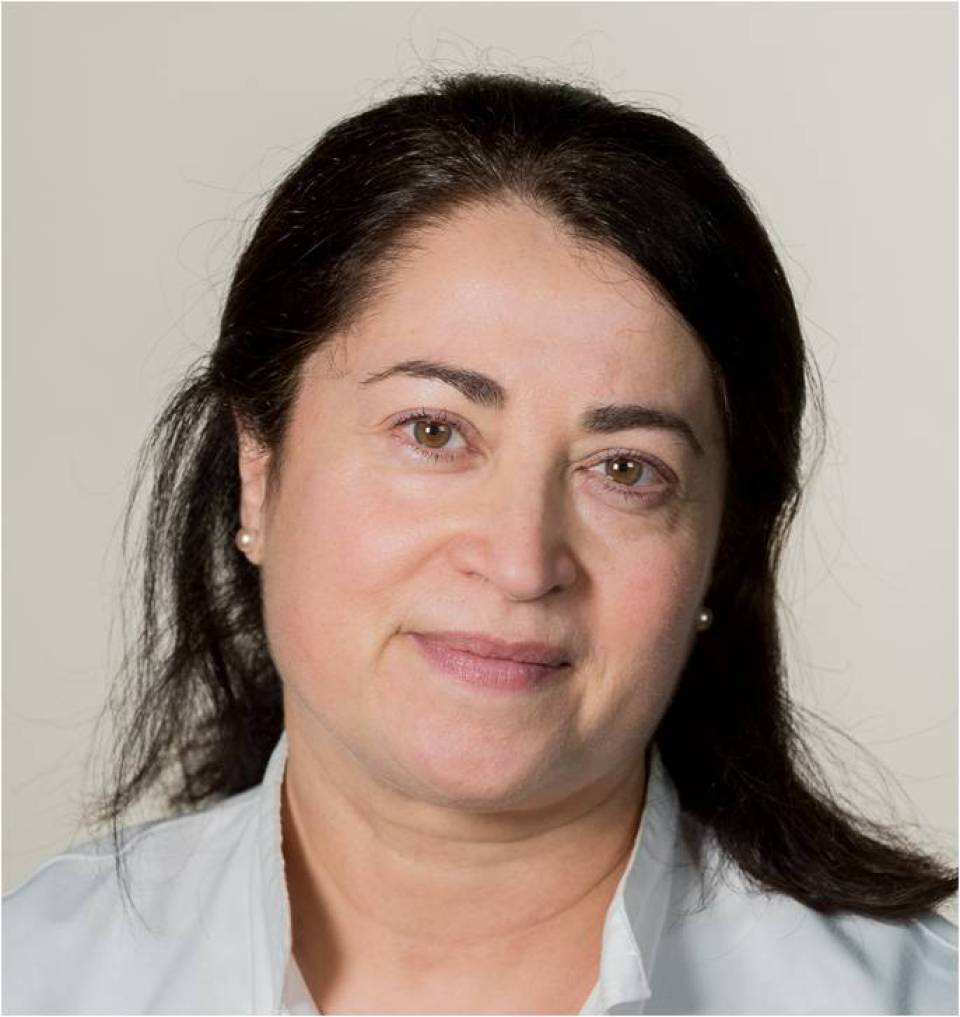- What is it?
- Risk factors
- Symptoms or signs
- Diagnosis and tests
- Treatments
- Evolution of ASD
- Living with ASD
- Lines of research
Treatment of Autism Spectrum Disorder
Each child or adult with autism is unique; each intervention plan must therefore be adapted to manage their specific needs.
The general aims of treatment are:
- To minimise deficits in social interaction, social communication and repetitive behaviours (primary symptoms), and also in any associated symptoms.
- To improve independence and functioning, thus facilitating academic learning, the acquisition of day-to-day life skills and the development of enjoyable activities.
- To reduce all behaviours that interfere with the individual’s daily functioning.
The majority of the interventions used to achieve these objectives are carried out by the parents and specialised professionals, psychologists, behavioural therapists, teachers and doctors. It is better if the interventions focus on the person’s normal environment.
In some instances, medical treatment could form a key part of the intervention in order to treat specific problems, e.g., aggressiveness or self-harm, or other associated psychiatric or neurological disorders.
At the beginning, intensive behavioural intervention requires the whole family to work in close collaboration with the healthcare team, who in some cases may enter into the family environment. In other cases, this therapy is provided through a specialised centre or in preschool classrooms.
Early intervention
The two most frequently used early intervention methods are: the Lovaas method, based on Applied Behavior Analysis (ABA) and the Early Start Denver Model.
Treatment for pre-schoolers and small children
Scientific studies have shown that early intensive behavioural intervention improves learning, communication and social skills in small children with autism. Researchers have developed a series of effective early intervention models that include the following characteristics:
- The child receives structured, therapeutic activities for at least 25 hours per week and preferably in their natural environment.
- The activities are performed individually or in small groups, with a low student to therapist/teacher ratio.
- Highly trained teachers and/or therapists oversee the intervention. Other specially trained professionals may assist in the intervention under the supervision of a professional with experience in treating autism.
- The therapy is guided by specific, well-defined learning objectives. The child’s progress in terms of fulfilling these targets is assessed and recorded regularly.
- The intervention focuses on the central areas affected by autism. These include social skills, language and communication, imitation, playtime skills, daily life and motor skills.
- The programme offers the child the opportunity to interact with their counterparts who are developing normally.
- The programme requires the parents’ active participation in the intervention, both when taking decisions and applying the treatment.
- The programme involves a multidisciplinary team including, as necessary, a doctor, a speech therapist and an occupational therapist.
In the case of children with language difficulties or a delay in developing appropriate language skills, an early intervention is particularly important in order to stimulate their ability to learn the language and communication skills required to communicate with the people around them. To meet this end, the interventions make use of alternative communication systems, such as PECS (Picture Exchange Communication System).
Another primary aim during the preschool stage, and also later in school-age children, is to encourage independent living skills. In this regard, it is worth highlighting the intervention programme derived from the TEACCH model developed by the University of North Carolina and based around the learning characteristics of people with autism (e.g., a greater capacity for processing visual information). This intervention model is based on structured teaching and visual organisation, wherein these principles are incorporated through the organisation of the physical space, personalised timetables, work systems and visual structures, making it one of the most recommendable programmes in school environments.
Other play-based programmes, designed specifically for this developmental stage and which place special emphasis on the child’s natural interests and emotions, have been developed recently. Although we still require more evidence regarding their effectiveness, some studies that lend support to these programmes have already been published (DIR/Floortime).
The various interventions and types of support are adapted to the child’s development as they acquire more social and learning skills. When children with autism go to school they benefit from training in specific social skills and specialised and adapted approaches in teaching.
Social skills and social thinking interventions
There are currently multiple social skill intervention programmes designed for children and adolescents with ASD and without any associated intellectual disability. The majority have proven effective in terms of improving these skills; the PEERS programme designed by researchers at the University of California in Los Angeles represents one of the most verified interventions. These social skills training programmes have also been seen to help adults with ASD.
Furthermore, psychological intervention programmes have also been developed with a specific focus on improving the skills of people with autism so they may understand and predict what other people think or feel (i.e., improve their theory of mind skills) , as well as understanding multiple social rules (e.g., M.G. Winner’s social thinking treatment , Carol Gray’s work with Social Stories™ and Comic Strip Conversations) or the programmes based on the SCERTS® model.
Emotion regulation is another skill that many children and adolescents also need to work on in order to improve their adaption and quality of life; some programs include work modules that focus specifically on this area (SCERTS®).
Regarding language, even though children and adolescents with high-functioning autism present appropriate linguistic skills, they often experience significant difficulties when it comes to appropriate language use (pragmatic language) and so this represents another specific area of intervention that requires attention.
These programmes can be delivered in both healthcare centres and more natural environments; the latter is preferable to help ensure the lessons learnt are assimilated and persist.
In any case, evidence indicates that children and adolescents with autism benefit the most from structured psychological interventions that incorporate visual information. Most social skills and social thinking intervention programmes follow these principles, although further research is still required, especially into social thinking interventions. Notwithstanding, the psychologist or therapist imparting these interventions must have experience and training in the treatment of autism.
Research shows that treatments that include the parents, achieve better results.
Parent training, either directly with therapists or through parent groups, plays a vital role in autism treatment. Research shows that treatments that include the parents and give them the tools needed to learn to handle their child’s dysfunctional behaviours and those required to develop and reinforce learning in adaptive skills achieve better results. Hence programmes have been developed that focus specifically on parents of children and adolescents with autism (The Incredible Years® programme).
Additionally, it is also very important to treat any other psychiatric disorders presented by people with autism. The presence of other psychiatric disorders associated with autism is common in a substantial proportion of children, adolescents and adults with autism and tends to significantly limit their quality of life. Some psychological intervention programmes used to treat anxiety disorders, for example, have been specifically adapted to the characteristics of people with autism in order to enhance their effectiveness in terms of improving any comorbidities (the Coping Cat programme).
Drug therapy
Psychopharmacological treatment is the use of medications to bring about behavioural, emotional or cognitive changes. There is no treatment currently available that focuses specifically on improving the characteristic symptoms of communication and social interaction deficit associated with autism. However, psychoactive drugs can be effective in treating a certain symptomatology that is very common in ASD and which can interfere in the socialisation, educational progress, safety and quality of life of people with autism.
Some of the so-called pharmacological “targets” are irritability, aggressiveness, self-harm, ADHD symptomatology (inattention, distractibility, impulsivity, hyperactivity), anxiety, mood disorders and sleep problems.
- Atypical antipsychotics, e.g., risperidone and aripiprazole. These are used to reduce irritability as well as aggressiveness, self-harm and behavioural disturbances in both children and adolescents with ASD.
- Methylphenidate, atomoxetine and guanfacine. These address inattention, impulsivity and hyperactivity.
- Atypical antipsychotics (risperidone, aripiprazole), some serotonin reuptake inhibitors (fluoxetine, fluvoxamine, sertraline) and anticonvulsants (e.g. sodium valproate). Used to treat the repetitive behaviours and inflexibility associated with autism.
- Melatonin. This is effective at helping patients who find it hard to fall asleep.
Side effects
All psychoactive drugs can have side effects. The following points must be implemented upon taking the decision to try out a psychoactive treatment:
- Clear identification of the medication’s target symptoms.
- Monitoring of these and other symptoms, which could be due to side effects of the treatment.
- Although treatment with just one drug is preferable, more complex cases may require a combination of drugs and therefore any potential interactions between them must be taken into account and monitored.
The medical indication to continue with a given drug therapy is determined on an individual basis and depends on the balance between its effectiveness and the possible side effects. Both the person with ASD and their family should participate in this decision.
The most common side effects of each treatment are:
- Atypical antipsychotics, e.g., risperidone and aripiprazole. These tend to cause weight gain and, in some cases, increased sedation.
- Methylphenidate. The most common side effects are a loss of appetite, a delay in managing to fall asleep and the appearance or worsening of motor tics.
- Atomoxetine. Typical side effects are headaches and gastrointestinal discomfort which improve if the medication is taken with meals, preferably with dairy products.
- Guanfacine. This can cause drowsiness and sedation, particularly when starting the treatment, and sometimes headaches as well.
- Serotonin reuptake inhibitors (fluoxetine, fluvoxamine, sertraline). These tend to produce gastrointestinal discomfort, headaches and an overall increase in food intake leading to weight gain.
Substantiated information by:


Published: 20 February 2018
Updated: 12 December 2023
Subscribe
Receive the latest updates related to this content.
Thank you for subscribing!
If this is the first time you subscribe you will receive a confirmation email, check your inbox